The history of traditional Chinese New Year practices
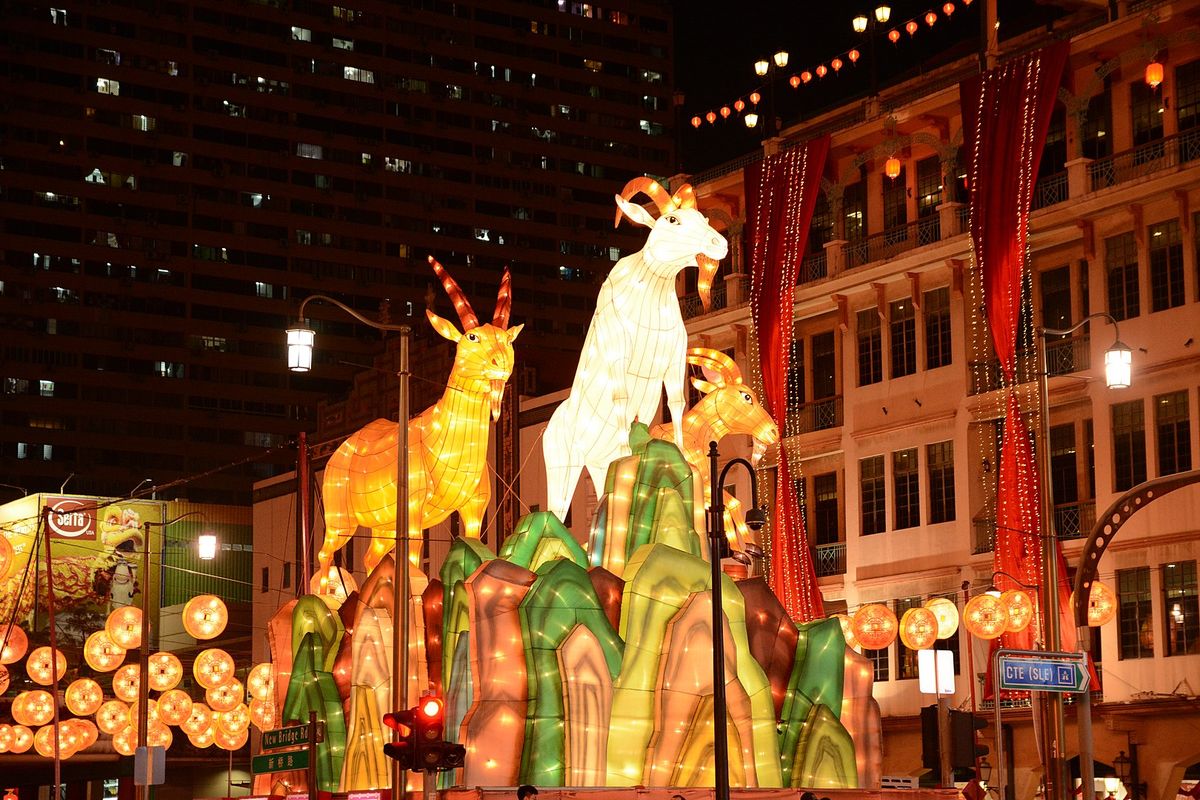
A few minutes every morning is all you need.
Stay up to date on the world's Headlines and Human Stories. It's fun, it's factual, it's fluff-free.
Chinese New Year is the most significant and auspicious festival in China, as it celebrates the beginning of a new year based on the ancient lunar calendar. Although several customs and activities occur during the 15-day celebration, we’ve listed a few you should know about and the history behind these traditional Chinese New Year practices.
Traditional Chinese New Year Practices
Firecrackers
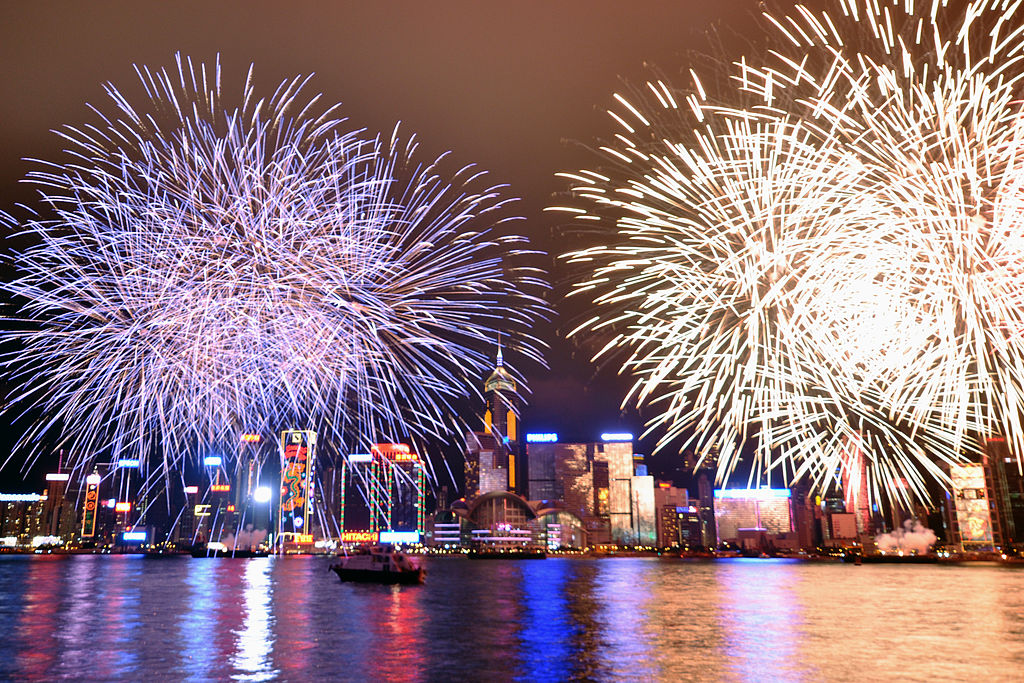
In the Tang Dynasty (618-907), the Chinese discovered that loud noise could be produced by inserting gunpowder into the hollow of a bamboo stick and then throwing it into a fire. This led to the invention of firecrackers. Later, paper tubes came to replace the use of bamboo stalks. Wrapped in red paper, a lucky color in China, firecrackers were popularized to enhance celebrations such as Chinese New Year. The red paper is left around for at least a day after releasing the firecrackers, so as not to rid any of the good fortunes it has brought.
Firecrackers are one of the traditional Chinese New Year practices, however, the time to use them varies from each region. Many families will release firecrackers before the traditional Chinese New Year’s Eve reunion dinner to invite ancestors into the celebration of the festival. It is also used to bring joy and create an ecstatic atmosphere for the celebration. Others will release firecrackers at midnight on New Year’s Day – after the reunion dinner – as it is thought to scare away evil spirits and celebrate the coming of the New Year. In some places, families will set off firecrackers on the morning of New Year’s Day before leaving the home, as it is thought to bring prosperity for the whole year. People will also release firecrackers on the day of the Lantern Festival, which marks the end of the celebration of Chinese New Year, to ward off misfortune and bring good luck.
Red envelopes
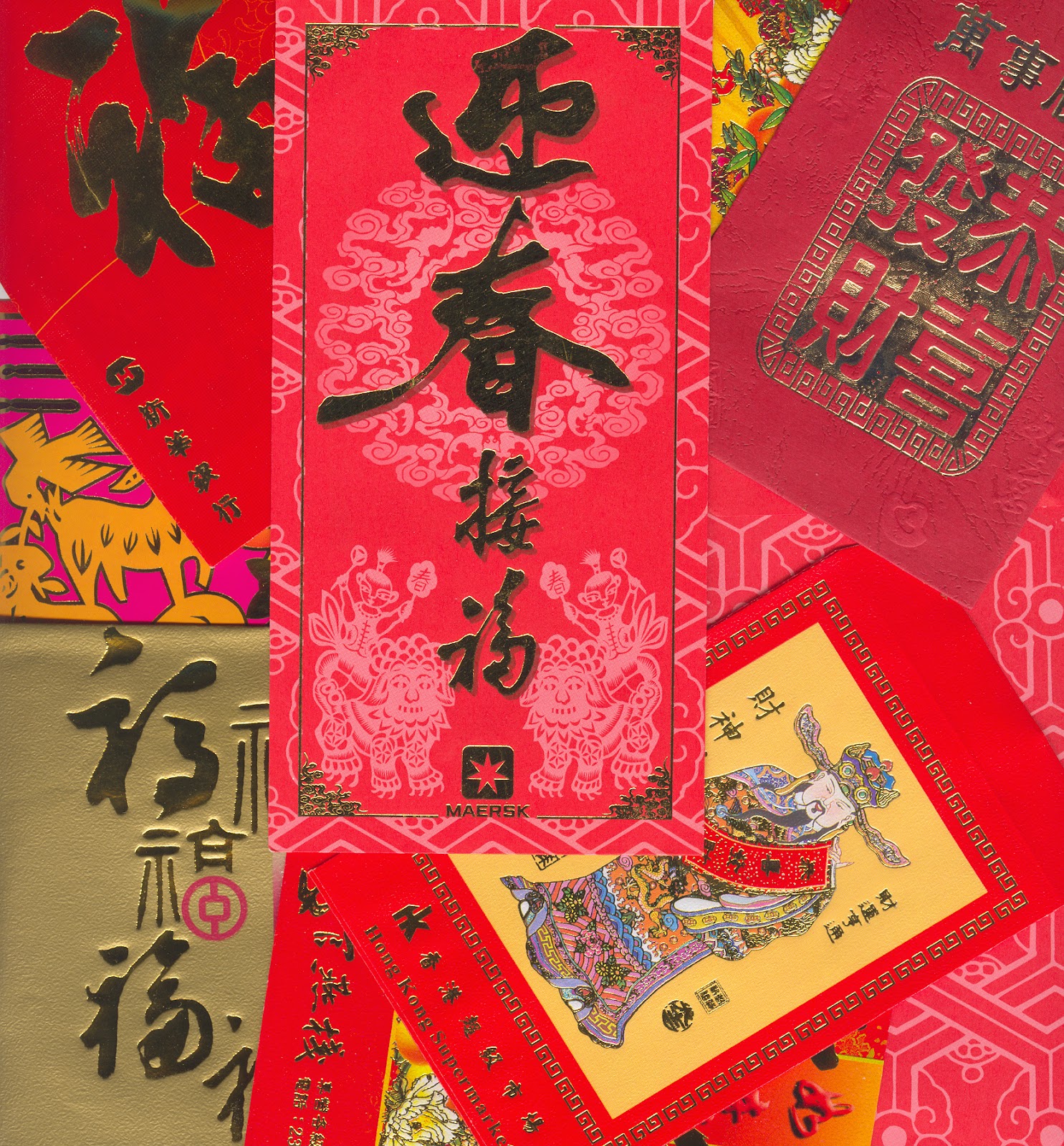
The red envelopes – 红包 hongbao in Mandarin and 利是 laishi or laisee in Cantonese – contain money and are typically given to children as traditional Chinese New Year gifts. In China, the money in the envelope is referred to as 压岁钱 yasui qian which “means money suppressing evil spirits.” As such, it is said that receivers of red envelopes are wished another safe and peaceful year.
It is a tradition that people that have started earning money give red envelopes during Chinese New Year, as it is considered a way to share your blessings. However, there is a custom that those who are not married need not send red envelopes to others. The color red is regarded as a symbol of happiness and good fortune in Chinese culture. As such, wrapping lucky money in red envelopes is a way to bestow more happiness and blessings on the receiver.
Spring couplets
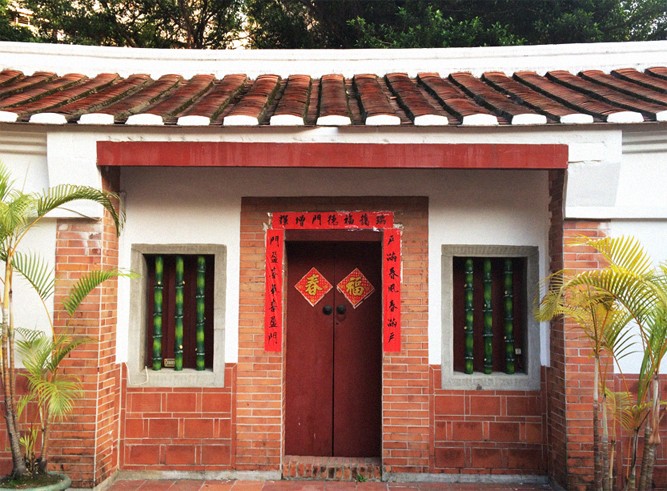
The origin of spring couplets can be dated back to 1,000 years ago when people would hang 桃符 “tao fu" – written charms on peach wood – on doors. Legend suggests that there was a huge peach tree which stretched across 1,500 kilometers on a mountain in the ghost world. To the northeast of this tree, two guards named Shentu and Yulei guarded the entrance to this ghost world. It was believed that hanging a piece of peach wood with the names of these guards inscribed on doors would scare the evil spirits away.
By the Song Dynasty (960-1279), people began to write two auspicious lines on the peach wood instead of the names of the two guards. The peach wood was later replaced by red paper, which symbolizes good fortune and happiness. Since then, it has been a traditional Chinese New Year practice to paste spring couplets on doors to bring in good fortune for the New Year and express best wishes.
Hanging lanterns
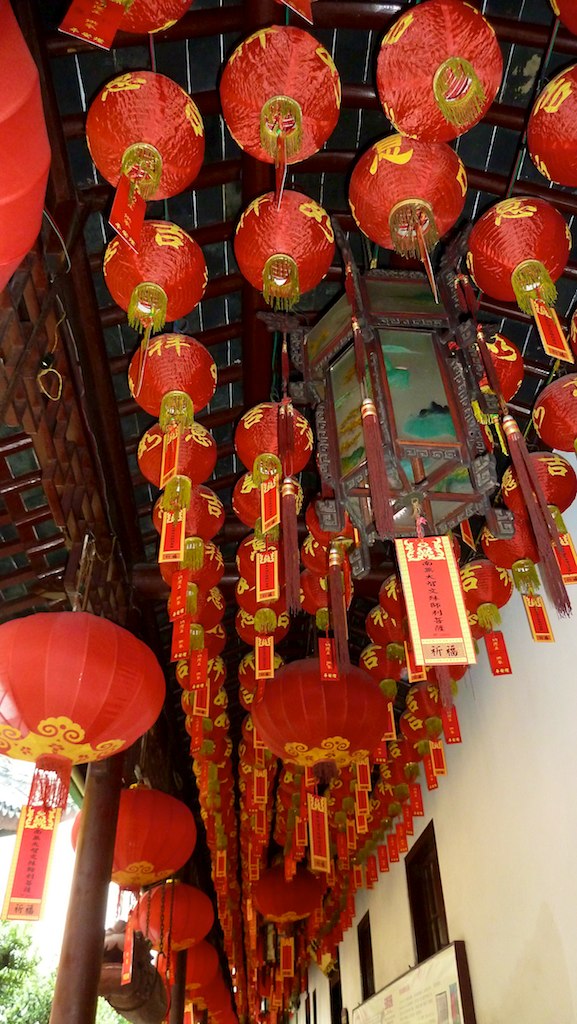
In the Eastern Han Dynasty (25-220), the first Chinese lanterns were invented to use as lamps and for the worship of the Buddha. By the Tang Dynasty, lanterns were popularized – in particular for the celebration of festivals – and became a symbol of national pride in China.
Chinese lanterns are typically red, oval-shaped and decorated with red or golden tassels, however, these lanterns also come in various shapes such as square, oblong and spherical. Lanterns are hung in both homes and public spaces during Chinese New Year, as it is said to ward away evil spirits and bring in good fortune. In cities and rural areas, you can also see lanterns adorning streetlights, public buildings and local shops.
Lion dance
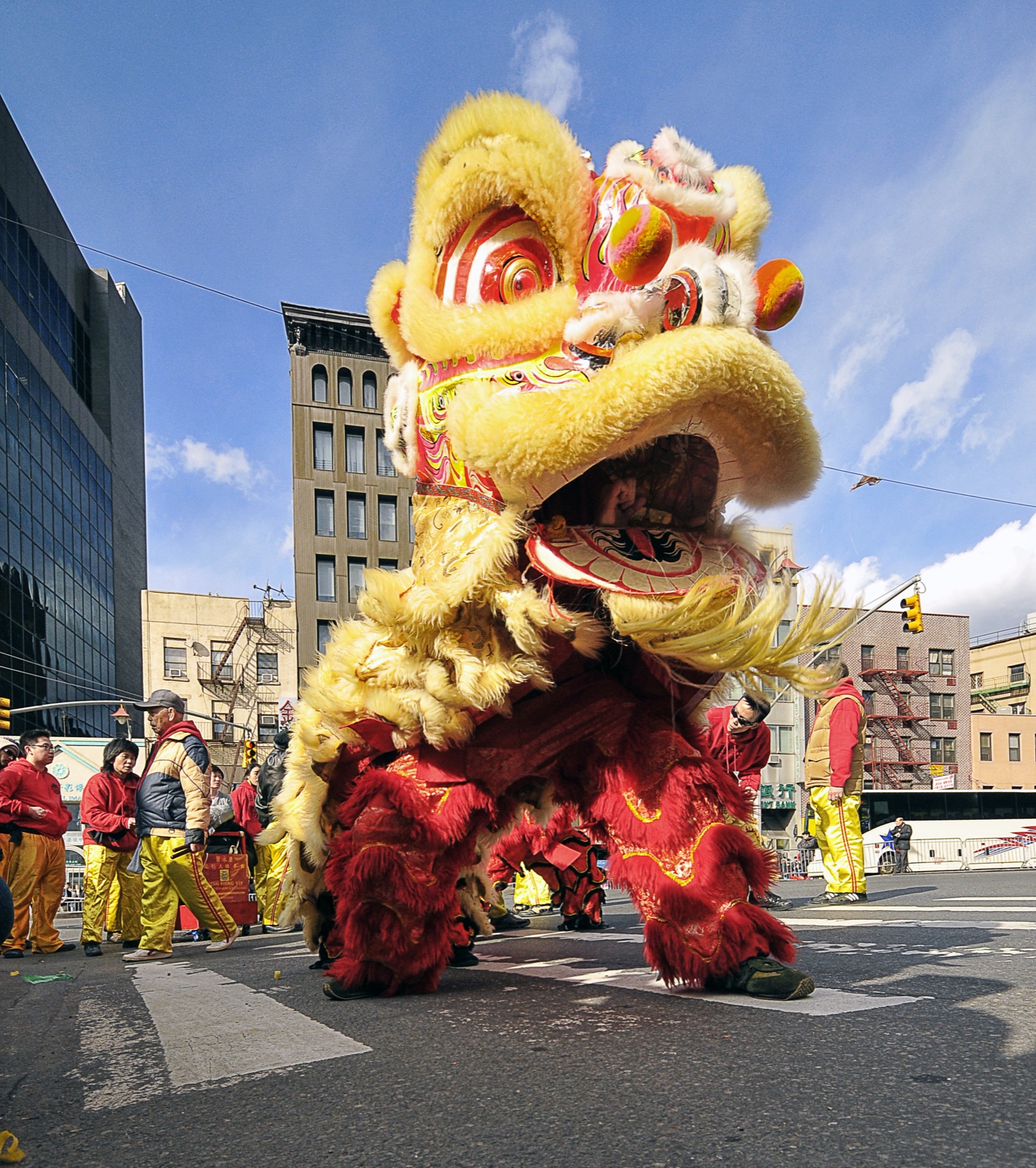
Bob Jagendorf The Lion Dance is a traditional Chinese dance which is performed at celebrations such as Chinese New Year for prosperity and good fortune, as the lion is believed to be an auspicious animal. Before the Han Dynasty, only a few lions were seen in the Central Plains from the western area of ancient China (now Xinjiang) due to the Silk Road trade. During this era, people mimicked the actions and appearance of the newly arrived lions in a performance, which developed into the lion dance.
The lion dance is performed in a lion costume and accompanied by an arrangement of drums, cymbals and gongs. During the celebration of Chinese New Year, lion dances will be performed in front of houses and shops of Asian communities to offer the traditional custom of 採青 cai qing, which translates to “plucking the greens." The lion plucks the auspicious green lettuce either hung on a pole or placed on a table in front of the premises. The “greens" (青 qing) are bound with a red envelope containing money as a gift to the lion dance troupe and may also be bound with auspicious fruits like oranges. In Chinese, 採 cǎi, which means pluck, also sounds like 财 cái, which means fortune.
Have a tip or story? Get in touch with our reporters at tips@themilsource.com




Comments ()